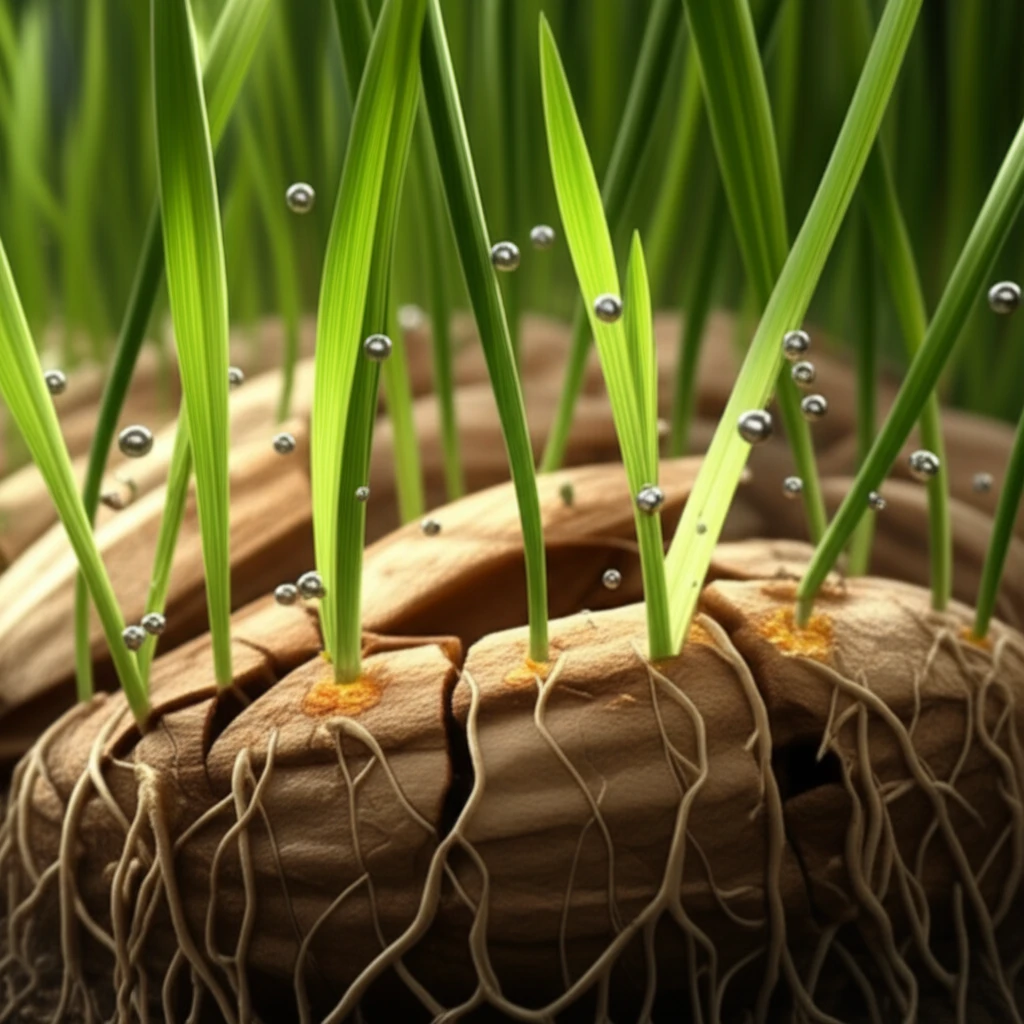
Rice Reboot: Nanoparticles Turn Back Time on Aged Seeds
"Unlock higher yields and robust seedlings with cutting-edge nanopriming technology."
In the world of agriculture, consistent and high-quality crop yields are paramount. But what happens when seeds age? Like all living things, seeds deteriorate over time, losing their vigor and ability to germinate effectively. This poses a significant challenge, especially in regions where improper storage conditions accelerate this aging process. For rice farmers, particularly those growing sensitive varieties like jasmine rice, this can translate to reduced yields and economic losses.
Now, a groundbreaking study published in Scientific Reports offers a promising solution: nanopriming. Researchers have discovered that by pretreating aged rice seeds with phytosynthesized silver nanoparticles (AgNPs), they can essentially turn back the clock, boosting germination rates, seedling vigor, and overall plant health. This innovative approach not only addresses the issue of seed aging but also promotes sustainable agriculture through the use of biocompatible materials.
This article explores the science behind this exciting technology, breaking down how nanopriming works, its benefits for rice cultivation, and the potential implications for the future of sustainable agriculture. Whether you're a farmer, researcher, or simply interested in the latest advancements in food production, read on to discover how nanoparticles are poised to revolutionize the way we grow rice.
How Nanopriming Supercharges Aged Rice Seeds

The core of this innovation lies in the creation and application of biocompatible silver nanoparticles (AgNPs). These aren't just any nanoparticles; they're synthesized using a green method, leveraging the natural reducing power of kaffir lime leaf extract. This ensures the AgNPs are coated with beneficial phytochemicals, making them both effective and environmentally friendly. Here's a breakdown of how nanopriming works:
- Enhanced Water Uptake: AgNPs create tiny pores in the seed coat, facilitating faster and more efficient water absorption. This is crucial for initiating the germination process.
- ROS Activation: Nanopriming stimulates the production of reactive oxygen species (ROS) within a safe range. These ROS act as signaling molecules, triggering metabolic processes essential for germination and seedling development.
- Starch Metabolism Boost: AgNPs enhance the activity of α-amylase, a key enzyme in breaking down starch into soluble sugars. This provides the developing seedling with a readily available energy source for growth.
- Aquaporin Upregulation: Nanopriming stimulates the expression of aquaporin genes, which are responsible for water transport within the plant. This further optimizes water uptake and utilization.
The Future of Farming is Small, But Mighty
The findings of this study have far-reaching implications for rice cultivation and sustainable agriculture. By using a biocompatible and environmentally friendly approach, nanopriming offers a way to:
<ul><li><b>Improve Crop Yields:</b> Even with aged seeds, farmers can achieve higher germination rates and more vigorous seedlings, leading to increased productivity.</li><li><b>Reduce Waste:</b> By revitalizing older seed stocks, nanopriming minimizes the need to discard aged seeds, reducing waste and maximizing resources.</li><li><b>Promote Sustainable Practices:</b> The green synthesis of AgNPs using kaffir lime leaf extract aligns with sustainable agricultural principles, minimizing environmental impact.</li></ul>
While further research is needed to optimize nanopriming techniques for different rice varieties and environmental conditions, this study provides a compelling glimpse into the future of farming. As nanotechnology continues to advance, we can expect even more innovative solutions to address the challenges of food production and ensure a sustainable future for agriculture.
